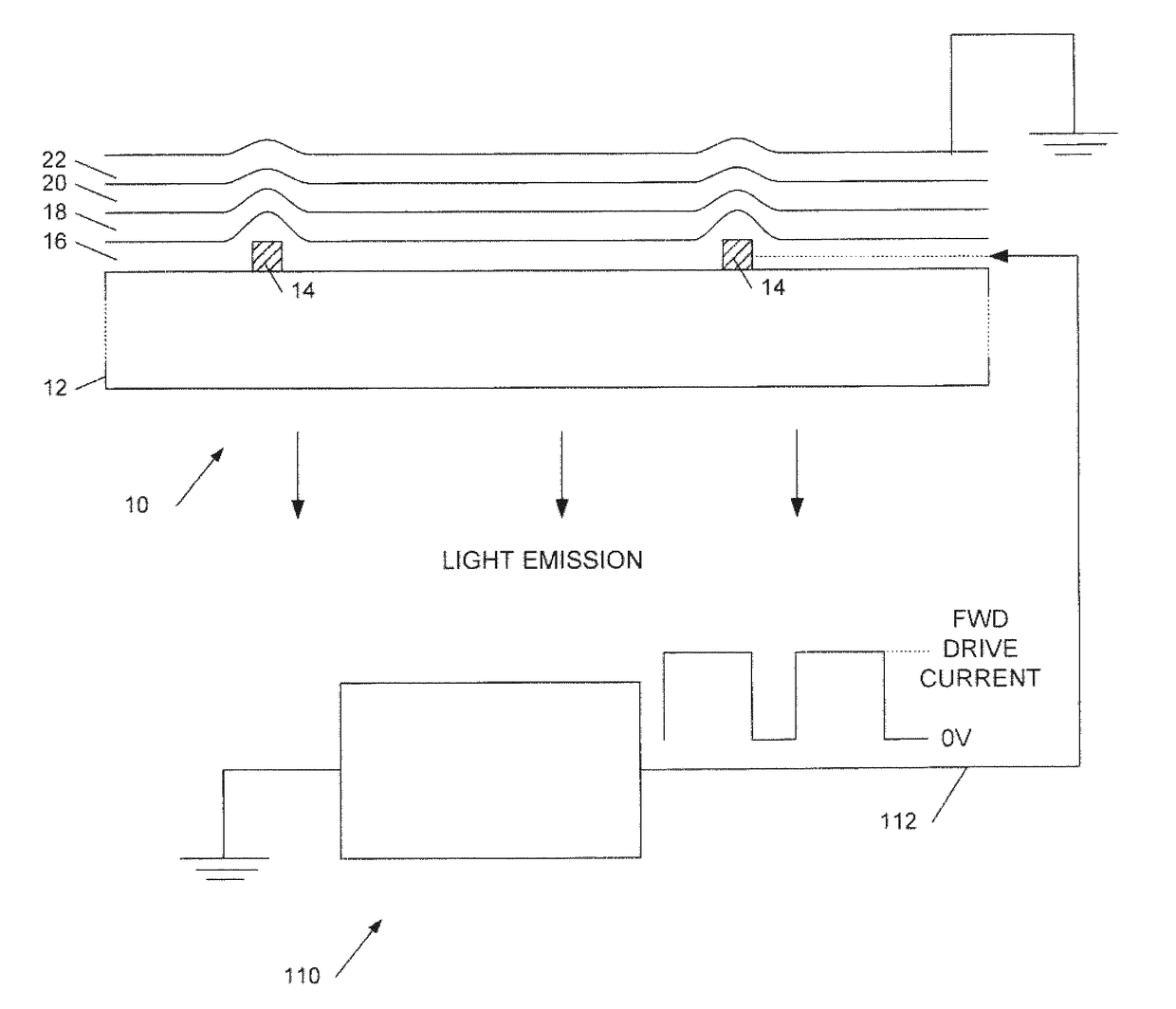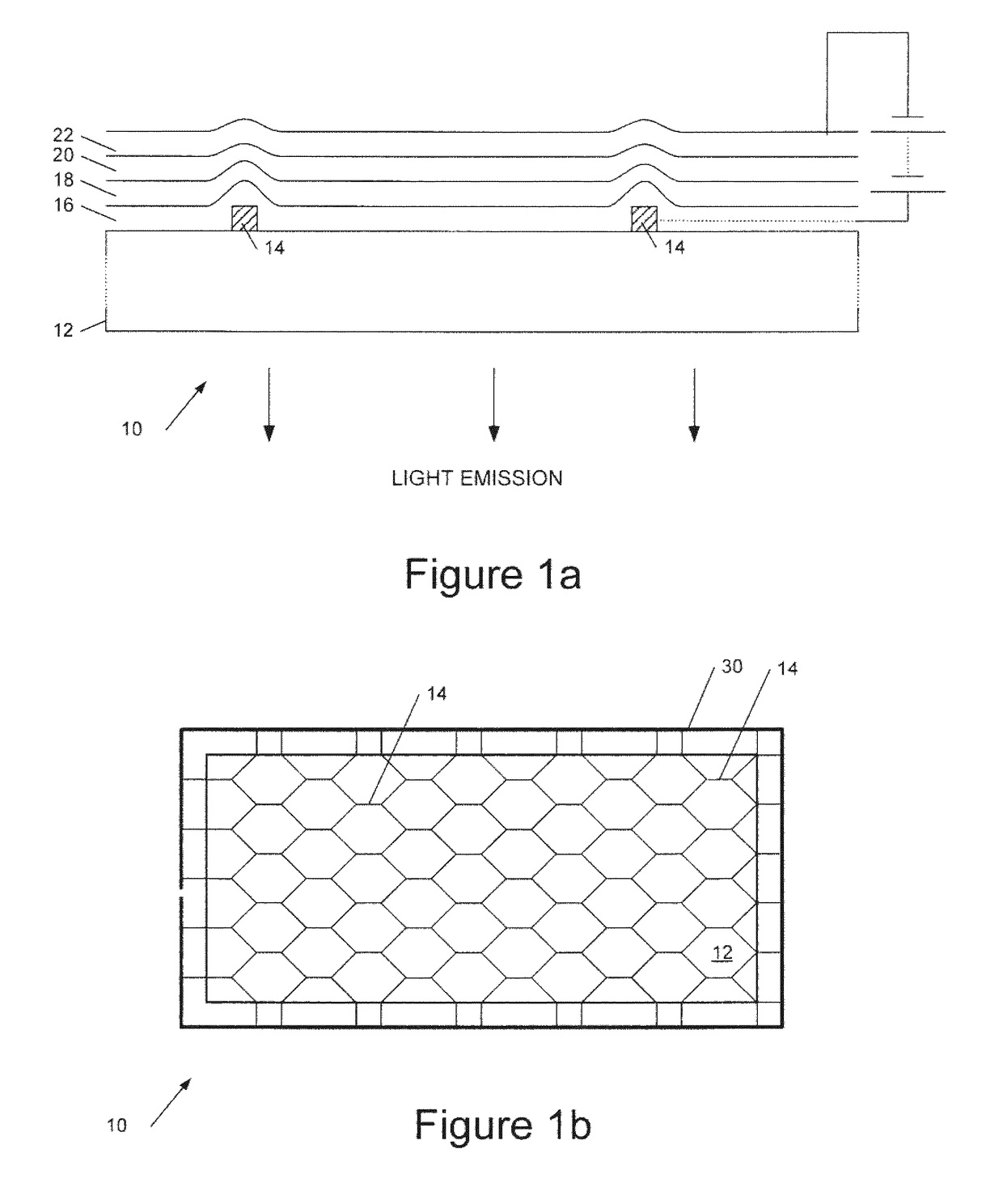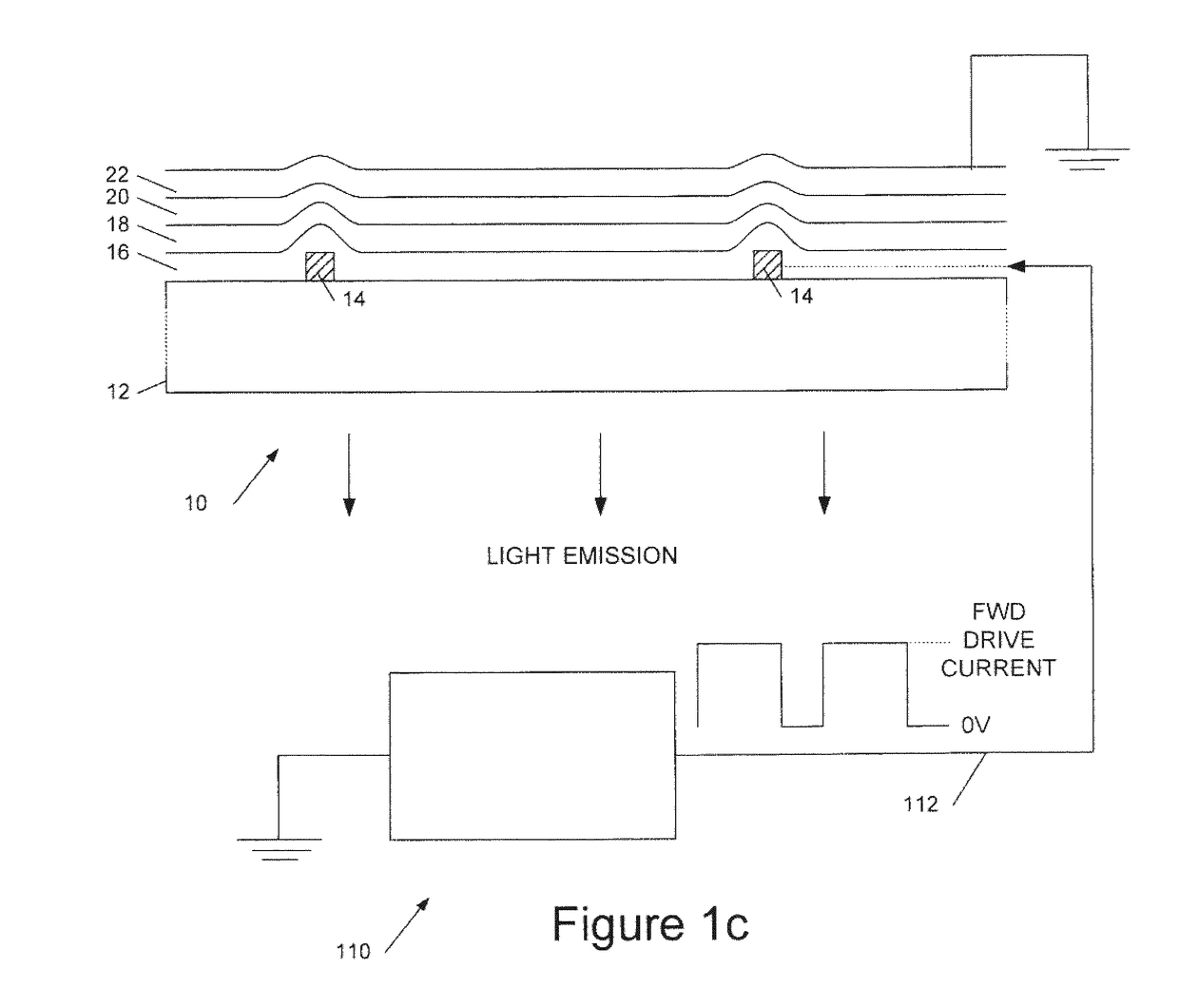Organic electronic lighting system
a lighting system and electronic technology, applied in the field of electronic lighting systems of organic materials, can solve the problems of short life times of copper anode electrode tracks, unsuitable for large-scale production, etc., and achieve the effect of increasing the lifetime of the operation of the lighting system
- Summary
- Abstract
- Description
- Claims
- Application Information
AI Technical Summary
Benefits of technology
Problems solved by technology
Method used
Image
Examples
Embodiment Construction
Organic Light Emitting Structures
[0025]In this specification references to organic LEDs include organometallic LEDs, and OLEDs fabricated using either polymers or small molecules. Examples of polymer—based OLEDs are described in WO 90 / 13148, WO 95 / 06400 and WO 99 / 48160; examples of so called small molecule based devices are described in U.S. Pat. No. 4,539,507.
[0026]OLED devices (which here includes organometallic devices and devices including one or more phosphors) may be fabricated using either polymers or small molecules in a range of colours and in multi-coloured displays depending upon the materials used. For general background information reference may be made, for example, to WO90 / 13148, WO95 / 06400, WO99 / 48160 and U.S. Pat. No. 4,539,570, as well as to “Organic Light Emitting Materials and Devices” edited by Zhigang Li and Hong Meng, CRC Press (2007), ISBN 10: 1-57444-574X, which describes a number of materials and devices, both small molecule and polymer.
[0027]To aid in unde...
PUM
 Login to View More
Login to View More Abstract
Description
Claims
Application Information
 Login to View More
Login to View More - R&D
- Intellectual Property
- Life Sciences
- Materials
- Tech Scout
- Unparalleled Data Quality
- Higher Quality Content
- 60% Fewer Hallucinations
Browse by: Latest US Patents, China's latest patents, Technical Efficacy Thesaurus, Application Domain, Technology Topic, Popular Technical Reports.
© 2025 PatSnap. All rights reserved.Legal|Privacy policy|Modern Slavery Act Transparency Statement|Sitemap|About US| Contact US: help@patsnap.com



